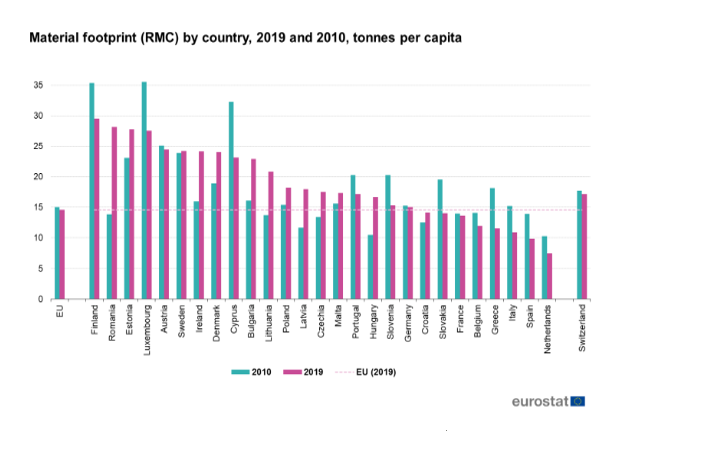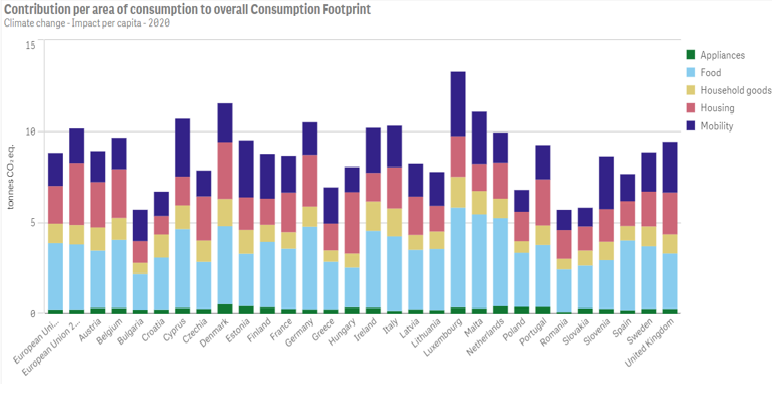[PG10] Material footprint of households

Key message

In 2019, the material footprint of households in Slovenia amounted to around 15 tons per inhabitant, which is more than the EU average (14.6 tons per inhabitant). Finland, Romania, Estonia and Luxembourg have the largest material footprint with around 28-29 tonnes per capita, the Netherlands the lowest with 7.4 tonnes.
Waste recycling is increasing; in 2018, eight countries (Austria, Belgium, Denmark, Germany, Italy, Lithuania, the Netherlands, Slovenia) sent at least half of their municipal waste for recycling. However, in Romania, Malta and Cyprus, only a tenth of municipal waste was sent for recycling.
According to a survey in Germany, mobility, housing and food represent the largest material footprint in households, with the footprint increasing with higher income, especially in the area of mobility.
With the largest consumption footprint across five areas (food, mobility, housing, household goods and appliances), they contribute the most to climate change in Luxembourg, Denmark, Malta, Cyprus, Germany, Italy and Ireland, and the least in Bulgaria, Romania and Slovakia. Slovenia is in the middle among the member states.
Charts
UN Environment, Economy Division (23.10.2022)
European Commission, Environment Directorate, Ecoinnovation (23. 10. 2022)
| EU 28[%] | Romania[%] | Poland[%] | Czech Republic[%] | Slovakia[%] | Estonia[%] | Hungary[%] | Croatia[%] | Belgium[%] | Bulgaria[%] | Latvia[%] | Spain[%] | Sweden[%] | Lithuania[%] | Slovenia[%] | Portugal[%] | Italy[%] | Finland[%] | France[%] | Greece [%] | Netherlands[%] | Austria[%] | Ireland [%] | Malta[%] | Luxembourg[%] | Germany[%] | Cyprus (2017)[%] | Denmark[%] | United Kingdom[%] | |
|---|---|---|---|---|---|---|---|---|---|---|---|---|---|---|---|---|---|---|---|---|---|---|---|---|---|---|---|---|---|
| Country | 47 | 11 | 34 | 34 | 36 | 29 | 38 | 25 | 55 | 31 | 25 | 35 | 46 | 53 | 54 | 29 | 50 | 42 | 45 | 20 | 56 | 58 | 38 | 10 | 49 | 67 | 10 | 50 | 44 |
Material Footprint of Low-Income Households in Finland, 2012, Michael Lettenmeier (October 23, 2022)
European Union, Eurostat - European statistics (October 23, 2022)
Wuppertal Institut für Klima, Umwelt, Energie gGmbH (October 23, 2022)
European Commission, JRC, EPLCA (November 25, 2022)













